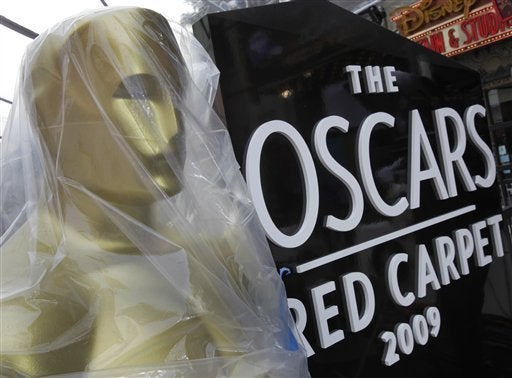
There's good news from Hollywood for electoral reformers ready to open up American elections to more choices and maximize turnout when people elect their leaders: the Oscar for best picture will be selected by instant runoff voting (also called "preferential voting" and "ranked choice voting").
The Academy of Motion Pictures has used the choice voting method of proportional representation for nominating best picture and most other categories since the 1930s. It's helped ensure nearly all members feel invested in the outcome on Oscar night, as they're very likely to have had one of their favorites earn a nomination.
For a several years before 1945, the Academy also used the ranked voting method of instant runoff voting for best picture, selecting such classics as Casablanca and Gone with the Wind. But it switched to plurality voting (the way we elect more offices in our current elections), apparently because it can make Oscar night more surprising by encouraging upsets -- favored films can "split the vote" and allow another nominee to win with as little as 21% support.
But with its decision this year to nominate ten motion pictures in 2010, the Academy decided that it was time to go back to instant runoff voting. It will ensure winners need to have a lot of Academy voters who want it as their first choice, as with plurality voting, but also upholds the principle of majority rule by avoiding split votes and "spoilers."
There's already been coverage in the New York Times and the entertainment press. Here was FairVote's news release on the development yesterday.
Motion Picture Academy Adopts Instant Runoff Voting for Best Picture
Decision Highlights How Reform Backed by Obama and McCain Can Improve Real World ElectionsFor Immediate Release: September 1, 2009
Paul Fidalgo, communications director - (301) 270-4616The Academy of Motion Picture Arts and Science announced this week that it will use instant runoff voting to choose its honoree for Best Picture, ensuring that the most celebrated movie of the year is one with strong support among Academy members. Used by the Academy in Best Picture voting before 1945, which was the last time ten pictures were nominated, instant runoff voting (IRV) is a system in which voters rank their preferences in order of choice. The nominee with the fewest votes is eliminated, and ballots cast for that film are moved to voter's next choice among the remaining films. The process continues until one film has more than half the votes and is declared Best Picture of the Year.
Recommended by Robert's Rules of Order for elections when voters can't gather together in person, IRV (also called "preferential voting") is used by organizations with tens of thousands of members like the American Association of University Women, American Chemical Society, American Medical Student Association, American Mensa, and the American Political Science Association. At least 51 colleges and universities use IRV for student elections, including UCLA, the University of Oklahoma, Harvard and Stanford. More than a dozen cities have adopted IRV for election to their top offices, including Memphis (TN), Minneapolis (MN), Oakland (CA) and San Francisco (CA). In 2002, President Barack Obama was the prime sponsor of pro-IRV legislation in Illinois, and Sen. John McCain backed a pro-IRV ballot measure.
Academy voters already appreciate the value of ranking candidates. Since the 1930s, the Academy has used the choice voting method of proportional voting to nominate best picture and most other categories. With choice voting, Academy members rank candidates just as with IRV, but it takes about a fifth of the vote to secure one of five nominations. Choice voting ensures that nearly all Academy members help nominate at least one nominee for best picture and other categories.
Earlier this year, the Academy announced that it would expand the Best Picture category from five to 10 nominees. Given that the nomination threshold will now be about a tenth of the vote, keeping the "first-past-the-post" voting system where voters can indicate a preference for just one choice would theoretically allow a film to take home the Oscar despite being potentially disliked by 89%. With IRV in place, the Best Picture winner is sure to be preferred by a large share of Academy members. This demonstrates how IRV improves single-seat political elections when more than two candidates run--because voters can rank their choices on their ballots, third party and independent candidates are no longer potential "spoilers," and no one takes office with small pluralities, but are far more likely to be the consensus choice of the majority.
"It's encouraging to see the Motion Picture Academy wisely adopt instant runoff voting," said Rob Richie, executive director of FairVote, a nonpartisan election reform organization that supports IRV. "It serves as another example of how IRV can not only improve how we pick our favorite movies, but how we can have more meaningful choices for leaders and representatives in our elections for public office."
